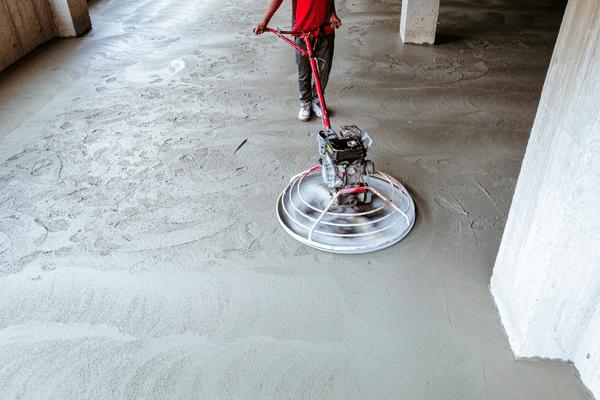When finishing concrete floors, two popular choices stand out: polished concrete and epoxy flooring. Both create smooth and durable surfaces for garage floors, basements, workshops, and commercial spaces. Homeowners and business owners often wonder which option works better for their needs.
This guide compares polished concrete vs epoxy flooring on key factors like durability, maintenance, appearance, cost, and more. You'll learn which flooring option fits your space best.
Polished concrete starts by grinding the existing concrete slab with diamond polishing pads using a concrete polishing machine. Crews gradually shift from coarse to fine grits to reach the desired sheen.
During concrete polishing a densifier penetrates and hardens the floor, cutting dust and leaving a smooth surface that resembles natural stone.
Polished concrete floors can last more than 20 years with minimal upkeep, making them a low maintenance option.
The surface boosts light reflectivity up to 100%. This extra lighting gives retail spaces and car dealerships brighter interiors and potential energy savings.
Because the process uses the existing slab and no harsh chemicals, it remains environmentally friendly; however the initial concrete must be sound and clean.
Design choices are narrower than an epoxy coating and the floor can become slippery when wet without added treatment, so owners should weigh appearance against traction needs before deciding to choose polished concrete.
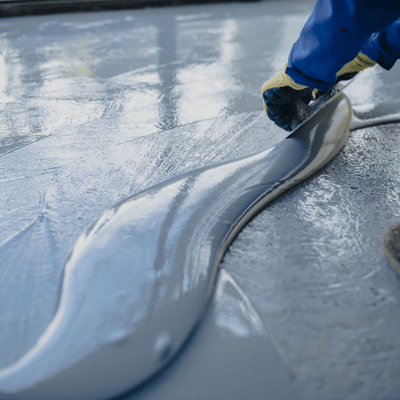
Epoxy flooring applies a protective coating over concrete floors. Workers mix resin and hardener to create a rigid plastic layer bonded to the concrete. The installation process includes surface prep, primer, epoxy coating, and often a protective topcoat.
Epoxy creates a chemical resistant barrier that seals concrete completely. This prevents moisture and stains from penetrating. The coating handles chemical spills from motor oil, gasoline, and cleaning products.
Epoxy flooring provides extensive customization options. You can choose any color and add decorative designs, metallic effects, or colored flakes. This flexibility works well for branded commercial properties.
The coating installs relatively quickly, usually taking 3-5 days including cure time. Epoxy flooring hides imperfections in the slab underneath.
Professional installation proves critical with epoxy flooring. Poor garage floor prep leads to peeling or bubbling. Standard epoxy can yellow under UV exposure. The smooth floor becomes slippery when wet without anti-slip additives.
Both floor options handle foot and vehicle traffic well. Choose the polished concrete flooring option for longevity; they last decades with care and stay energy efficient by reflecting light. Strength comes from concrete, not a coating, so the floor resists wear.
Epoxy flooring offers strong protection yet the floor may need refresh coats over time. Quality epoxy garage floors and floor systems handle heavy machinery traffic. If concrete beneath cracks the epoxy can follow, fueling polished concrete vs epoxy flooring debate among installers.
For most commercial and industrial settings, polished concrete vs epoxy discussions agree both floors are durable. Polished concrete floors edge out epoxy flooring in longevity, giving a long lived floor that serves decades.
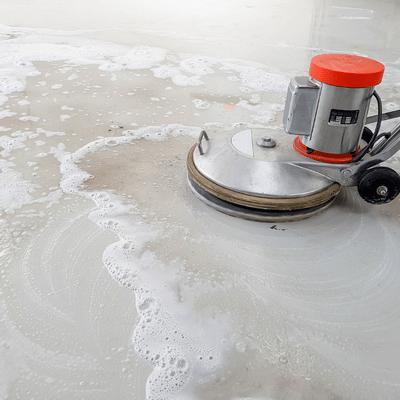
Both are low maintenance flooring options compared to carpet or hardwood. Polished concrete floors need dust mopping and occasional damp mopping. Deep clean yearly and reseal every 2-3 years. No waxing required, just periodic buffing to restore shine for polished concrete floors.
Epoxy surfaces clean easily with gentle pH neutral cleaners, and their durable finish resists stains. Avoid harsh acids that dull the coating. In high-traffic areas, you might need recoating every few years, yet the low cost helps.
Polished concrete wins slightly on maintenance since it needs no special cleaners or recoating cycles. Understanding polished concrete vs epoxy and seeking expert installation quickly lead to an informed decision.
Polished concrete delivers a modern, industrial look. The natural gray concrete shows through with subtle variations. You control the sheen level and can add stains for color. Limited customization keeps the aesthetic clean and minimalist.
Epoxy flooring offers maximum design flexibility. Choose any color, add metallic effects, or create decorative patterns. Colored flakes create a terrazzo-like appearance popular in garage floors. The coating completely covers concrete imperfections.
For bold colors or custom designs, epoxy coating provides more options. For understated elegance, polished concrete creates a sophisticated natural stone appearance.
Both smooth surfaces need attention for safety. Polished concrete surfaces maintain decent traction when dry due to its micro-porous surface. When wet, it can be slippery without proper treatment.
Standard epoxy creates a very smooth concrete surface that becomes slick when wet. Most installers add slip resistant additives like aluminum oxide to the topcoat. This creates texture for better grip.
Both floors can be made slip resistant with proper planning. Include anti-slip measures in wet areas or where chemical spills might occur.
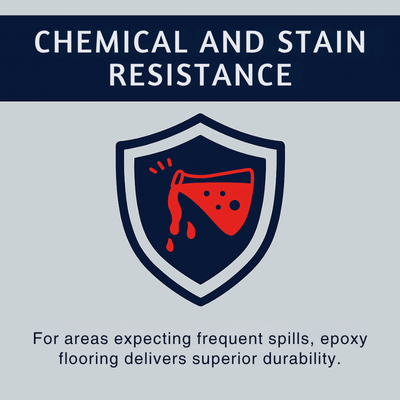
Epoxy flooring excels in chemical resistance; the non-porous coating blocks motor oil, gasoline, cleaning products, and many industrial chemicals. This durability makes epoxy flooring ideal for garages, workshops, industrial facilities, or spaces where ceramic tiles fall short, and its gloss can increase light reflectivity.
Polished concrete floors offer resistance with proper sealing, yet acids can etch and oils penetrate over time, underscoring concrete vs epoxy differences in durability compared with epoxy flooring.
For areas expecting frequent spills, epoxy flooring delivers superior durability. Choosing epoxy flooring over polished concrete safeguards concrete floors and shows why epoxy flooring remains the preferred solution.
Both options offer good value compared to premium flooring materials. Initial costs vary based on project size and local market conditions.
Epoxy flooring often costs less upfront, especially for smaller areas like residential garages. Material and labor typically range $3-7 per square foot for basic systems.
Polished concrete can be very cost-competitive on larger projects. The process mainly involves labor and equipment time. Costs typically range $4-10 per square foot depending on finish level.
Consider long-term value too. Polished concrete's longer lifespan and minimal maintenance can offset higher initial costs.
Both require professional installation for best results. Concrete polishing involves multiple grinding passes with increasingly fine diamond pads. Workers apply densifier and optional sealer. The process takes several days but creates an immediately usable surface.
Epoxy installation requires thorough surface prep, then sequential coating applications. Each layer needs curing time. Total installation takes 3-5 days, with additional cure time before heavy use.
Polished concrete ranks as the more environmentally friendly option. It uses the existing slab with minimal chemicals. The increased light reflectivity can reduce lighting energy needs.
Epoxy involves petroleum-based products but creates a long-lasting surface. Modern formulations offer low-VOC options to minimize environmental impact.
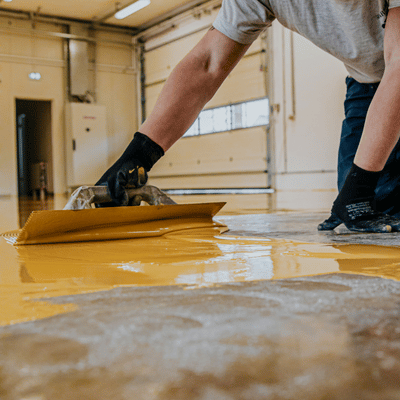
Choose polished concrete for retail spaces and showrooms needing elegant appearance, commercial and industrial facilities with heavy foot traffic, areas where eco-friendly flooring matters, spaces needing maximum longevity with minimal maintenance, and clean slabs in good condition.
Choose epoxy coating for garage floors exposed to automotive fluids, industrial settings with chemical exposure, areas needing specific colors or branding, concrete with imperfections to hide, and workshops and utility rooms needing sealed surfaces.
The polished concrete vs epoxy choice depends on your specific needs. Polished concrete provides unmatched longevity, low maintenance, and natural beauty. Epoxy offers superior chemical protection, design flexibility, and complete surface sealing.
Consider your space usage, maintenance preferences, and aesthetic goals. Both create beautiful, durable surfaces that outperform plain concrete.
For expert advice on your specific situation, consult with professional flooring contractors. They can assess your concrete and recommend the ideal solution for your needs.
Ready to transform your concrete floors? Contact a qualified installer today to discuss which option works best for your space. With proper installation, either choice will provide years of reliable, attractive flooring performance.

